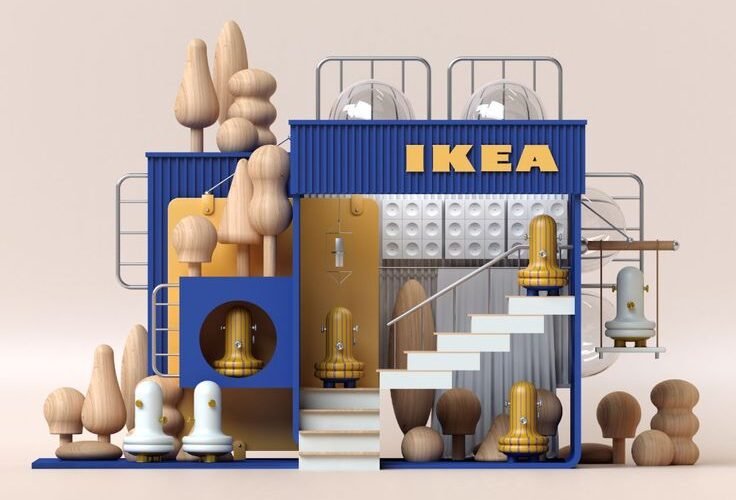Is Ikea Worth It in India? Honest Review

IKEA entered the Indian market in 2018 with much fanfare, opening its first store in Hyderabad. Since then, it has expanded to cities like Mumbai, Bengaluru, and Navi Mumbai, with online delivery in several other regions. Many Indians had high expectations from this globally-renowned Swedish furniture giant. But now, years after its arrival, does IKEA live up to the hype in India? We tried it, and here’s our honest, no-nonsense verdict—based on real purchases, customer experience, and practicality.
The IKEA Appeal in India
IKEA has always projected itself as a one-stop solution for affordable, functional, and stylish furniture. In India, it adds a touch of international flair to the otherwise traditional furniture-buying process. Walk into an IKEA store, and you’ll see a maze of sample rooms, themed décor setups, kitchen modules, and cozy bedrooms. The brand tempts customers with Scandinavian minimalism and smart space-saving solutions.
The pricing also seems attractive at first glance. For instance, a basic study table starts at ₹2,000 and a bed frame at around ₹6,000. Many people flock to IKEA expecting affordability, durability, and European design all rolled into one.
Our Buying Experience
We visited the IKEA store in Bengaluru and also placed a few online orders to check the consistency. The offline experience felt well-organized. Store layout helped us visualize how products would fit into real spaces. Staff guided us at multiple points, and we didn’t feel lost despite the vastness of the showroom.
We picked up a few items:
- A Micke study table
- A Malm bed frame with storage
- A Kallax shelving unit
- A Förhöja kitchen trolley
- A set of chairs and basic dinnerware
At checkout, the billing process took less than ten minutes. Delivery scheduling came next. IKEA provided multiple delivery slot options for an extra fee. Assembly service was available too, for an additional charge, which we opted for.
Quality Check: How Do the Products Perform?
1. Micke Study Table
The Micke table arrived in two flat-packed boxes. The boards felt light but sturdy. Assembly took about 45 minutes. The desk suited our WFH setup perfectly and looked sleek. However, it scratched easily and wobbled a little after a few weeks. Not a disaster, but not perfect either.
2. Malm Bed Frame with Storage
This piece required professional assembly. Once put together, it looked premium and felt solid. The storage drawers moved smoothly, and the frame held up well with a standard queen mattress. After six months, it still felt stable. One issue, though: any water spills on the veneer surface caused swelling at the edges.
3. Kallax Shelving Unit
Kallax is a bestseller for a reason. The design looked neat, and the finish blended with our décor. We used it vertically in the living room as a bookshelf and plant stand. It hasn’t warped or wobbled yet. We give this product a strong thumbs-up for function and design.
4. Förhöja Kitchen Trolley
The trolley worked as a great utility piece in a compact kitchen. Its wheels rolled smoothly, and it offered generous storage. The untreated wood needed regular oiling to avoid water stains. As long as you maintain it, this piece delivers great value.
5. Dinnerware and Chairs
The dinnerware had a clean, minimal look. It’s microwave-safe and didn’t chip after months of daily use. The dining chairs were ergonomic but not cushioned, so long sitting sessions felt uncomfortable. Still, for the price, they did the job.
Price vs. Value: Is IKEA Really Affordable?
This question hits at the heart of the Indian IKEA debate. Compared to mass-market Indian brands like Pepperfry or Urban Ladder, IKEA often wins on entry-level pricing. But add delivery and assembly charges, and the final bill climbs fast.
For example:
- The Malm bed costs ₹18,000
- Assembly added ₹1,000
- Delivery added another ₹1,500
- Total: ₹20,500
At that price point, local carpenters can build you a solid wooden bed, fully customized. That said, the IKEA advantage lies in modularity, speed, and aesthetics. If you want a bed tomorrow without design iterations and delays, IKEA delivers.
Durability and Maintenance
IKEA uses engineered wood, MDF, and particle board for most items. These materials keep costs down but come with trade-offs. High humidity, rough handling, and poor maintenance can damage them quickly. Water causes swelling. Dragging furniture instead of lifting it causes joint loosening.
If you have kids or pets, you’ll need to handle IKEA furniture with care. It isn’t built to survive generations, unlike traditional hardwood furniture. Most pieces last 3 to 7 years if maintained properly.
Assembly Experience
IKEA prides itself on DIY culture, but not everyone enjoys the hassle. For small items like tables or shelves, the instructions work well. For beds or modular wardrobes, we strongly recommend professional assembly.
We once tried assembling a TV unit ourselves. Despite the detailed manual, we spent three hours and ended up putting a panel backward. A technician later fixed it for a fee. IKEA’s outsourced assembly teams are competent, but they often reschedule last minute or arrive late. This part of the experience can feel frustrating.
IKEA vs Local Furniture Stores
Let’s break down how IKEA compares to Indian alternatives:
| Factor | IKEA | Local Stores |
|---|---|---|
| Design | Contemporary, modular | Traditional, customizable |
| Material | MDF, particle board | Plywood, solid wood |
| Pricing | Entry-level affordable | Varies widely |
| Delivery time | 2–7 days | 7–30 days |
| Assembly | Extra charge | Often included |
| Durability | Moderate | Higher with solid wood |
| Aesthetic appeal | Sleek, modern | Depends on vendor |
In short, IKEA suits those who need speed, style, and function. Local stores serve those who want long-lasting, classic designs.
Customer Service
Customer support felt responsive over email and WhatsApp. Delivery teams informed us ahead of time. Refunds and replacements were processed smoothly when we received a damaged side table. But long hold times on the helpline and automated replies frustrated us during one return case. It isn’t perfect, but better than average.
Final Verdict: Is IKEA Worth It in India?
Yes, IKEA works well for certain buyers:
- Young professionals setting up a rented flat
- Urban families needing space-saving furniture fast
- People who like clean aesthetics and ready-to-use solutions
But it may not suit:
- People wanting heirloom furniture
- Large families needing ultra-durable builds
- Buyers in Tier 2 cities where delivery options are limited
In our experience, IKEA delivered value where speed, design, and modularity mattered. However, the finish can feel basic, and the maintenance demands careful handling. You won’t get “forever” furniture, but you’ll get efficient living solutions at reasonable prices.
Would we buy again? Yes, for smaller items, kitchen modules, and budget-friendly setups. For big-ticket, long-term investments like wardrobes or custom beds, we’d still explore traditional options.













